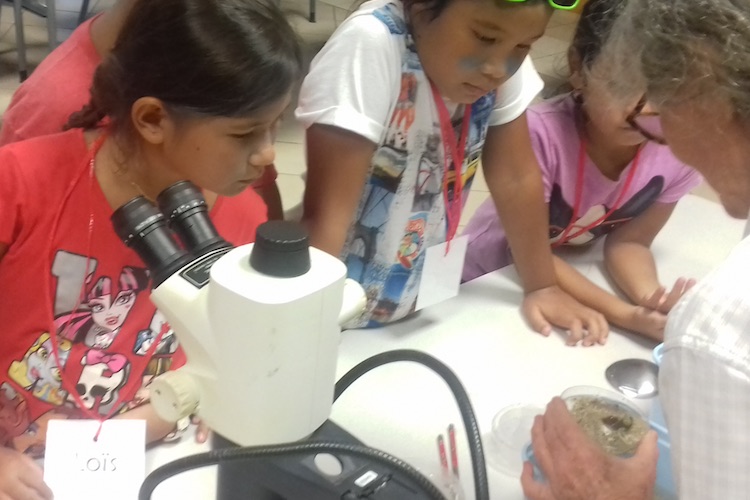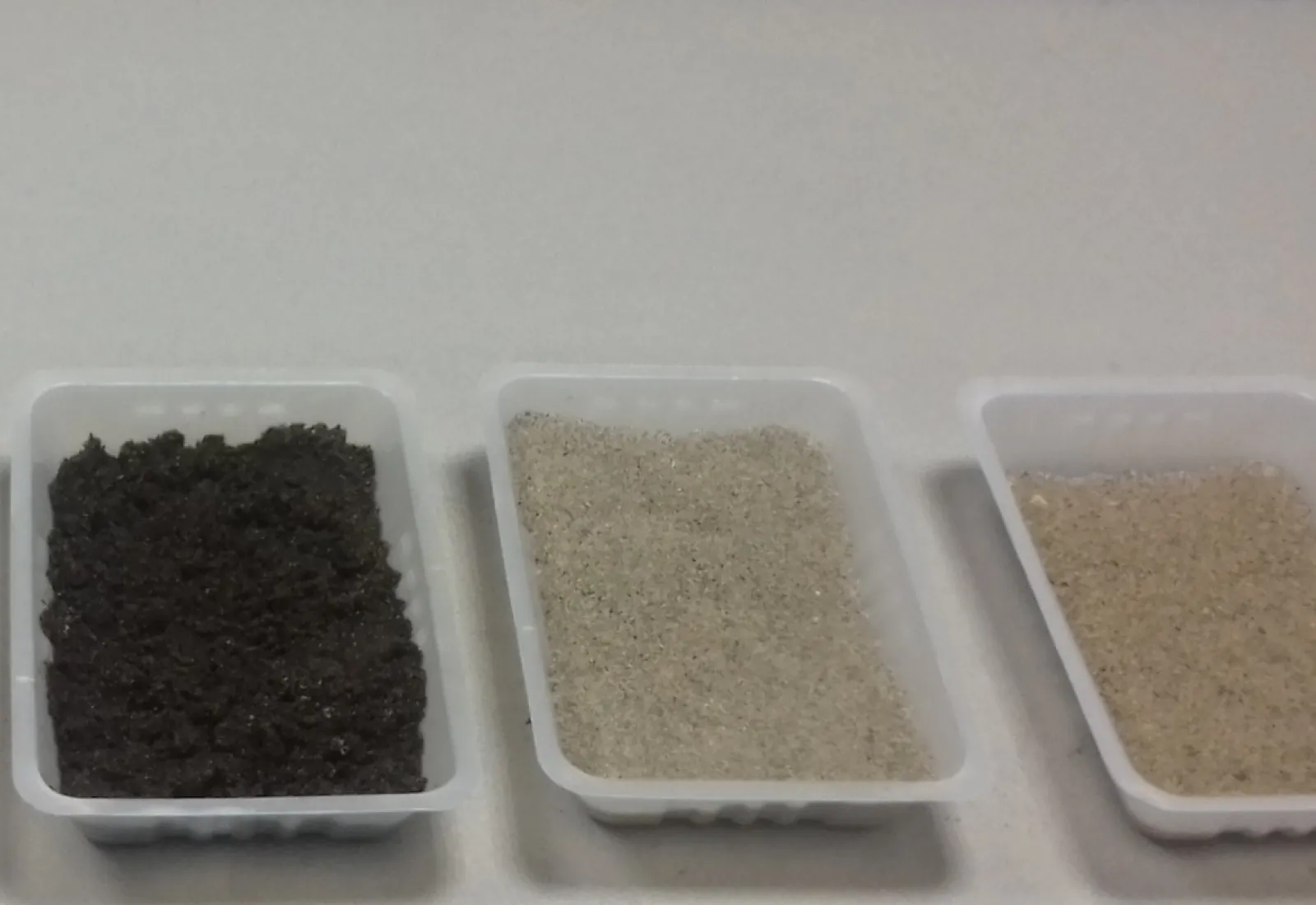
Through hands-on investigations, students will discover the different properties of sand, as well as its origins. Through the activity of laying out transects, students will gain some understanding of scientific sampling procedures.
By examining sand particles of different origins and sizes, and from different areas (Tetiaroa's different beaches, also beach and river sand from other islands in Polynesia), students will discover the properties of sand. Students will investigate the different components, sizes, and shapes of sand, and what these characteristics infer – as to origin, age, wave activity, etc.
To investigate the organisms living in the beach sand, students will take samples of sand in the shallow water of the lagoon and study their samples under the microscope.
Take a transect
Divide class into small groups. Each group should have a guide who will take them to the area of beach that they will study. Each group will lay out a transect extending through all three habitats. (backshore, foreshore, nearshore)
Note: The locations for the transects should be chosen ahead of time so that there are examples of different beach types as well as a variety of organisms per zone. The transects are not intended for sampling, but are intended to help students visualize a “slice” of beach and its zones. Once students are familiar with the characteristics of each of the zones, they should wander the beach to search for organisms.
Each group should collect a bag of sand (about what would fit into an ice-cream-container), and some sand with seawater from the shallow part of the lagoon in jars. The samples must be well covered by the water, and kept out of the sun.
Follow up
If students have photographs, drawings, or observations of the different organisms they found, these observations can provide the take-off point for a guided discussion on the similarities and differences in the three zones, which organisms were found, and how different organisms would need to adapt in order to survive in each habitat. A prepared slideshow could be shown which would summarize the beach ecosystem of Tetiaroa.
Sand workshops
In these investigations, students will use the sand collected earlier, along with sample brought to Tetiaroa by the class from different areas of Tahiti (and the world?).
Sifting – samples of sand with different sized particles is to be sieved through graded sieves. When a quantity of sand is separated, which size makes the biggest pile? Then, one spoonful of sand from each of the separated piles is put into a tall graduated cylinder, which is then filled with water. Students should hold the cylinder with one hand covering the bottom and one hand covering the top, then invert the cylinder and observe. Which size particle settles fastest? Which settles slowest?
Matching – piles of rocks and sand samples are presented – students need to match the sand to the rock(s) that could have created it. Students can 'make sand' by rubbing rocks together over white paper.
Weighing – task is to weigh a quantity of dry, fine sand and then add water up to the level of the sand and weigh the sample again. How much water does it hold? Do the same with samples of coarse sand and beach rubble and compare the differences. The same cup must be used for all 3 samples.
Microscope – take samples of sand (with water) from the bottom of the nearshore beach habitat, and examine under a microscope. Students should look at the sand particles and the organisms they might happen to find. A set of identification cards near the microscope would help with identification.
Vinegar test – drop vinegar on sand samples.
Motu art – driftwood, rock, or paper, white glue and sand of different colors. Food coloring can be used to dye some dry, sifted, white sand if the students want to. Otherwise, use sand samples from Tahiti, rivers, etc., to get lots of different colors. Students 'draw' designs in glue on driftwood or card stock, then sprinkle sand on it.
Materials
sand sieves, graduated cylinders, balance scale & weights, funnels, spoons, trays, white glue, driftwood or card stock, microscopes, hand lenses, sand and rock samples from a variety of locations.
Onetahi

